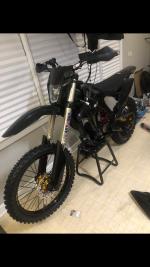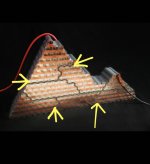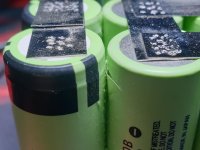I don't know enough about spotwelders today to say what is better, but the little I have kept up on the Kweld types seem better for high-current interconnects (that need to be thicker or multiple types of materials, etc).
AFAICR the power supply people use on Kweld type welders is an RC LiPo battery, typically, but the big thread for them has better info than I can give.
If the cell holders/spacers fit the cells properly so the cells can't move at all within them, and the pack as a whole is enclosed and mounted so it can't twist relative to the way the pack was welded together, there shouldn't be any significant vibration or displacement between parts.
If the welds are good enough to carry the current required, they're probably good enough to withstand whatever vibration does get thru all that.
AFAICR the power supply people use on Kweld type welders is an RC LiPo battery, typically, but the big thread for them has better info than I can give.
If the cell holders/spacers fit the cells properly so the cells can't move at all within them, and the pack as a whole is enclosed and mounted so it can't twist relative to the way the pack was welded together, there shouldn't be any significant vibration or displacement between parts.
If the welds are good enough to carry the current required, they're probably good enough to withstand whatever vibration does get thru all that.












